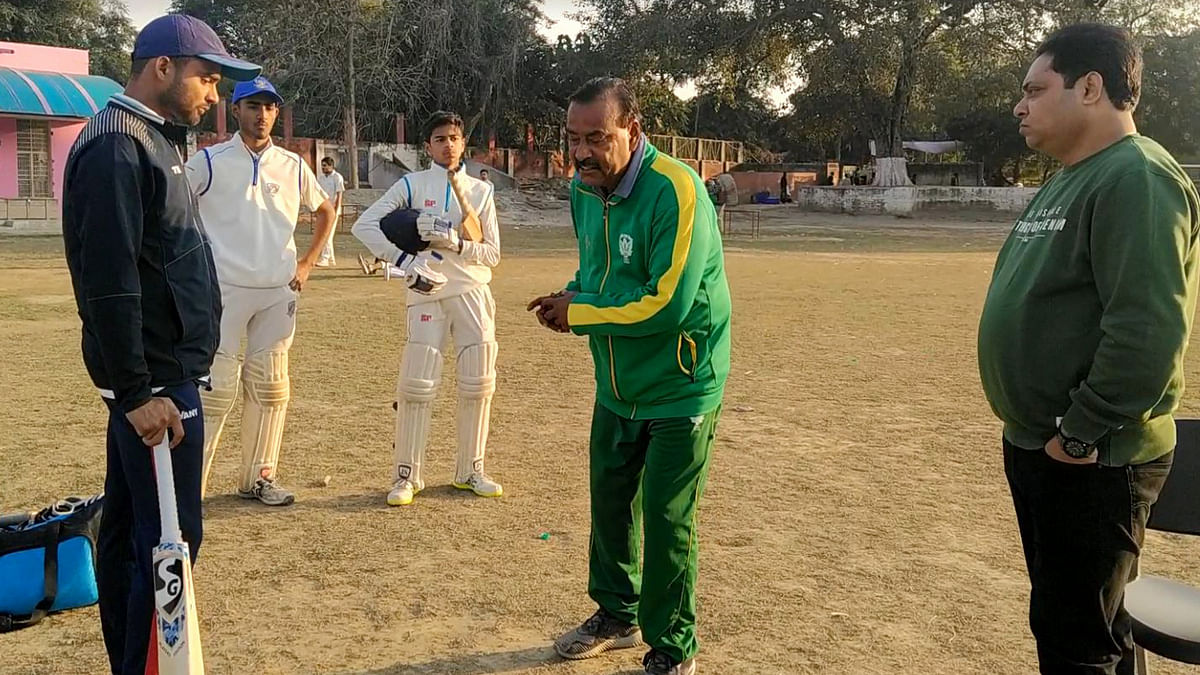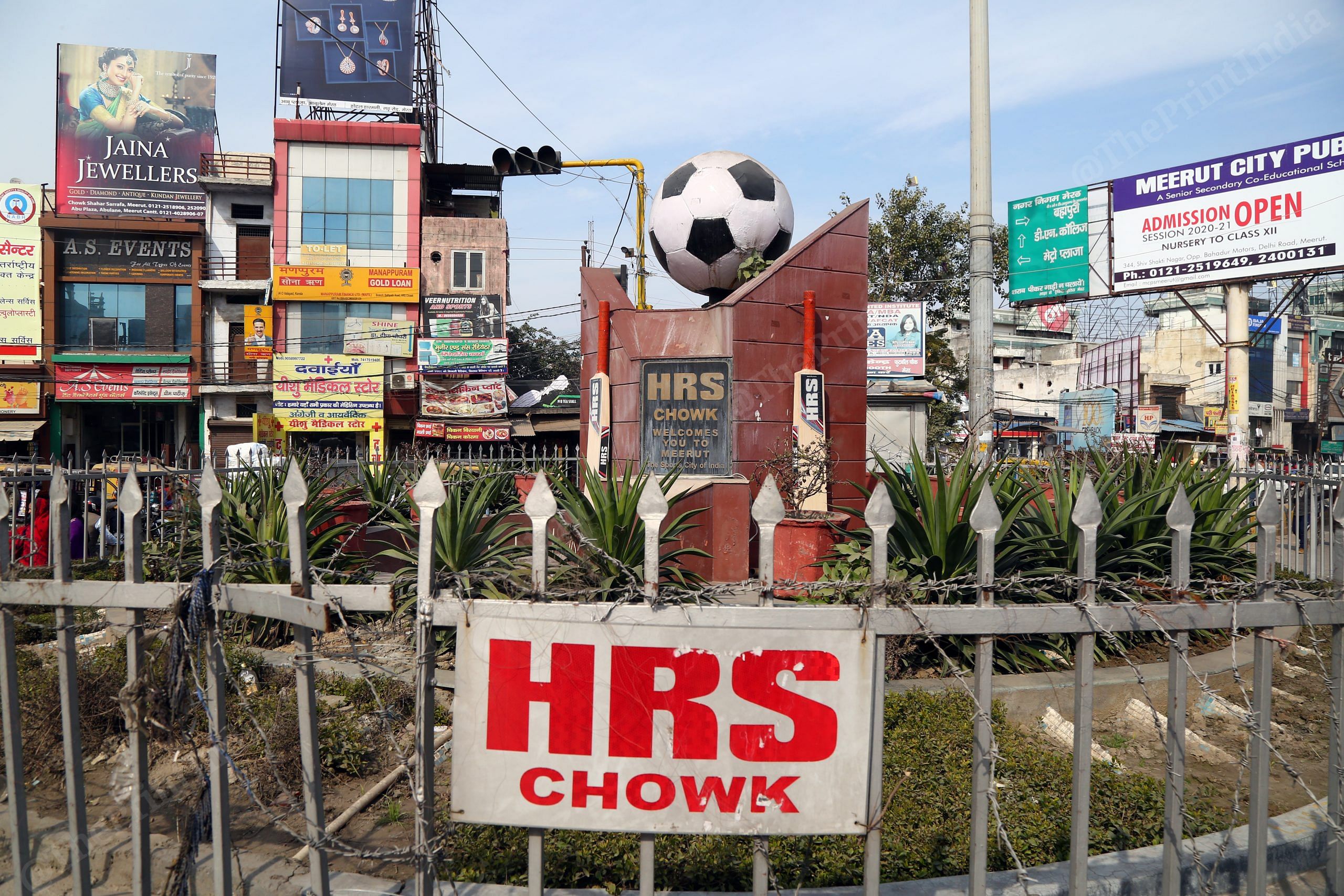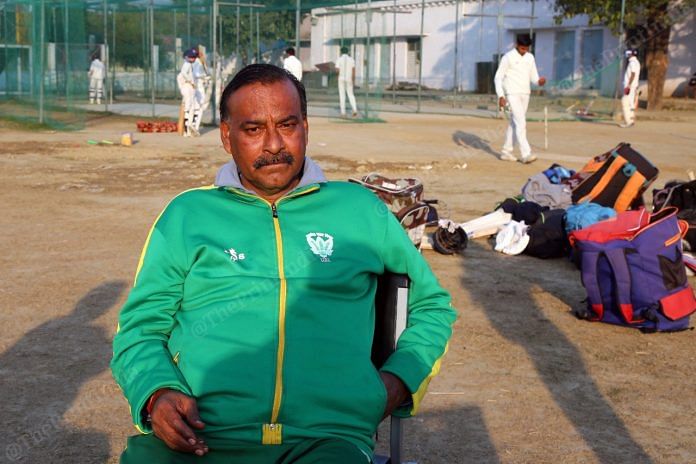Meerut: Uttar Pradesh has been at the centre of a quiet revolution in Indian cricket that has, of late, seen the sport produce stars not just from the metropolis’ but smaller towns as well.
One of the places that exemplifies this paradigm shift is Meerut — the garrison town forever synonymous with the 1857 revolt and of late, it appears, fast bowlers and the odd spinner.
Meerut has churned out the likes of Bhuvaneshwar Kumar, Praveen Kumar, Sudeep Tyagi — the lively seamer who played four ODIs for the Indian team but is better known for his stint with the Chennai Super Kings — and Karn Sharma, the leg-spinner who has also made his name in the IPL.
It is also the town where Kartik Tyagi, who on Sunday will lead the Indian attack in the U-19 World Cup final against Bangladesh, honed his skills. With stirring pace and swing, the 19-year-old seamer has already impressed in the World Cup in South Africa, including tearing through the Australian middle-order in the quarter-finals.
And the teenager shares a common thread with his illustrious predecessors — 56-year-old cricket coach Vipin Sharma Vats.
An employee of the Food Corporation of India (FCI), Vats has been coaching in Meerut since 1996. The one-time Ranji cricketer, whose career never really took off, has found second wind in coaching and is credited with discovering the likes of the two Kumars and the two Tyagis.
On this February day, Vats walks into the cricket pitch at the City Vocational Public School in Meerut Cantt, where he now coaches, sporting a green jacket, matching track pants, with his hair neatly combed.
Vats, though quiet, has a commanding presence. He politely introduces himself and dishes out a firm handshake.
He shows little interest as the conversation veers towards the scope of writing a profile on him, the Under-19 World Cup and the evolution of cricket as a viable profession across backgrounds.
His eyes, however, light up at the mention of Kartik Tyagi and other wards like Bhuvneshwar Kumar and Praveen Kumar. Suddenly, he is keen to talk.
Also read: Tiger Pataudi: India’s first ‘Muslim star’ who was not afraid to use his name
The cricketer
Vats has been associated with the game for over four decades.
Born in Meerut, Vats says he first picked up a bat when he was 12-years-old. And for all his bowling coaching prowess, his antecedents are in the other aspect of the game.
A wicket-keeper and batsman, Vats headed to the Green Park Stadium in Kanpur as a 17-year-old. It was part of an initiative by the UP government, where he along with others stayed in a hostel and were trained and educated.
By 1983, Vats says he made his debut for the Uttar Pradesh Ranji Trophy team as a 20-year-old. But his career never really took over. Vats played just 26 matches for UP in a nearly 10-year career, scoring 1,279 runs at an average of 33.65.
He, however, made it to the North Zone squad for the Duleep Trophy in the 1989/90 and the 1990/91 seasons. Some of the most special moments of his cricketing career, he says, was when he played alongside Kapil Dev in the Escorts Premier League.
Vats, though, says he nearly made it to the Indian team. “’Congratulations you are going to New Zealand’ is what Kapil Dev and Bishan Singh Bedi told me in 1989, while telling me that my name was doing the rounds for the international tour,” he says.
The wicket-keeper batsman never made it, and he blames it on “connections or pull as you may call it”. Vats is not bitter about the way his career turned out, repeatedly saying “by the grace of God, I have got so much”.
The 56-year-old, however, did earn an India jersey. “Madan Lal (member of the 1983 World Cup winning squad) gave him his India jersey but I taped up the India logo and promised myself that I will only untape it when I earn one of my own,” he says.
Vats finally got his jersey but in a different role. He was appointed the National Cricket Academy coach in 2005. “That was a very emotional moment for me. To wear the India jersey after years of hard work,” he says. “I had tears in my eyes.”
Also read: Bapu Nadkarni — the frugal left-arm spinner who defined Mumbai’s ‘khadoos’ cricket
The coach
Vats began coaching in 1996 and attributes his success to his wicket-keeping days.
“My experience as a cricketer helps me guide my students better in every aspect of the game,” he says. “Be it the technique, understanding of the pitch or even pressures of the game.”
Vats’ coaching is no-nonsense and straight cut, yet empathetic.
He explains that he cannot underscore enough how important it is to build the confidence of a player and motivate them. “The days of yelling at students are gone,” he says. “You need to motivate them and build their confidence, because that is half the game after all. You cannot demoralise them.”
Vats started coaching at the famous Victoria Park Academy in Meerut but now has his own academy, which he started in 2013.
“There were too many people there, close to 300 students,” he says. “People from all over UP come there. I felt guilty that I could not give all my attention to everyone.
“There is not enough focus on a person. I can’t coach for the sake of it.”
Vats also trains players at City Vocational Public School in Meerut Cantt, where his wife is a music teacher. Most of his students, he says, come from lower or middle-class backgrounds from across the state — Saharanpur, Bijnor, Muzaffarnagar.
His regimen is rigorous and is made with the focus on the individual. The training schedule includes practicing at the nets, fielding practice, fitness conditioning focusing on strength and agility and match practice.
“I can’t do lip-service coaching,” Vats says. “Aside from the usual training routine, I also give each student individual attention to focus on their game and take out time to teach them how wicket conditions can impact their game.”
Of late, Vats says, there are a new bunch of cricketers — young women taking up the sport. “I currently coach six girls and have told them not to worry about things like finances and other pressures,” he says. “Either I or the academy will take care of all their problems and in return, they have to give it their all on the pitch.”
The coach believes that women’s cricket has immense potential. “I tell parents to take care of their girls’ diets and I will take care of their game,” he says.

The talent-spotter
For all of his coaching prowess, it is only natural that the conversation steers towards his famous wards. Much like his latest prodigy Kartik Tyagi, Vats says he caught all of them young.
The coach explains that he first saw the U-19 fast bowler when he was 12-years-old and noticed that he had a lean physique, and was a quick learner.
“I saw Kartik’s physique and his game and could tell that he would be a good bowler,” Vats says. “It, however, took some time to convince both him and his father, because the father wanted him to be a batsman.”
Vats explains that aside from honing Kartik’s talent, he also had to teach him about the different pitch conditions, a facet the coach believes is crucial for a bowler. “What also struck me about him was how hardworking he was,” Vat says. “Aside from training on the pitch, he would go back home to Hapur and practice his action in his farm.”
Vats also recalls the time that swing bowler Bhuvneshwar Kumar, or Bhuvi as he is fondly known, came to him at the Victoria Park Academy. “He was in jeans and chappals and was just 13 years old. He came with his sister,” Vats says.
Vats says he asked Bhuvi to demonstrate his bowling action but the young boy objected as he was wearing slippers. “I told him all I wanted to see was his grip on the ball and bowling action,” he says.
As for Praveen Kumar, Vats credits him for “changing the attitudes of families in the region towards cricket as a profession”.
Vats says he spotted Praveen when he was on his way to Hapur. “He was just about to bowl and I stopped to watch him play. One of my colleagues told me it was a local match and I was wasting my time. I stayed nevertheless to watch him bowl and I had never seen anyone bowl like that,” he says.
“I summoned him and told him to come to the academy the next day. He replied by saying that he did not have enough money to pay the fees, I told him no one was asking for a fee.”
Vats explains that one of the reasons for Praveen’s success was that he lived a simple life. “Many would complain that he did not come to the ground for fitness practice but little did they know that he would go to the gym and train on his own,” he says. “He was a simple boy, who ate simple. Not like the chemicals people pump in today.”
On whether he is still in touch with his students who made it big, Vats recalls an incident with Bhuvaneshwar. He says that Bhuvneshwar was bowling at 145 km/h in a game but ended up wicket-less.
Vats says he called him up in the evening and reminded him that his USP was swing and that he should focus on it even if it meant bowling a bit slower. In the next match, Bhuvneshwar picked up three wickets and Vats got a thank you message.
‘Welcome to the Sports City of India’
For all its old world charm, Meerut appears to recognise its latest offerings. The main chowk in the town sports two cricket bats and a football along with the sign — ‘HRS Chowk welcomes you to Meerut – The Sports City of India.’

The bragging may not be that way off the mark.
Kartik Tyagi isn’t the only U-19 cricketer from Meerut. The squad’s captain, Priyam Garg, is also from the town and had trained at the Victoria Park Academy where Vats used to coach earlier.
In a town usually bustling by noon and eerily silent in the morning, the Victoria Park Cricket Academy is an exception.

It is the only coaching centre in Meerut that is open in the morning — its ground is bustling with players, some practicing at the nets, some stretching and others in the middle of a match.
Like Vats’ academy, Victoria Park also has a number of players from different parts of the state.
Kulraj Gujjar, 16, is a right-arm fast bowler who makes the daily commute from Hapur, which takes an hour one way. He’s been training at Victoria Park for the past two years but had to convince his family for a while to even get here.
“My father is in the army and wanted me to join as well,” he says. “I refused and then had to convince him to let me train, telling him that I have the skill to be a good player. It took some time but he eventually relented.”
Ravi Chauhan, 15, originally from Bijnor has also moved to Meerut to train. He comes from a family of sugarcane farmers who did not accept his dream.
“I used to play in Bijnor but then I had to stop because my family wanted me to focus on my studies and then eventually get into farming,” he says. “However I could not commit to studies. I gradually tried to convince them and finally they allowed me to play.”
He has been training at the academy for the past three months now.
And if the young cricketers need any inspiration to create history, they don’t have to look far — right in the middle of the practice ground is a tower built in memory of those who fought in the 1857 mutiny. It is here that the mutineers broke into the Victoria Park jail on 10 May 1857 to free captured soldiers, setting off the revolt.
Also read: Even big men cry: How cricketers like Virat Kohli are batting for inclusive masculinity



